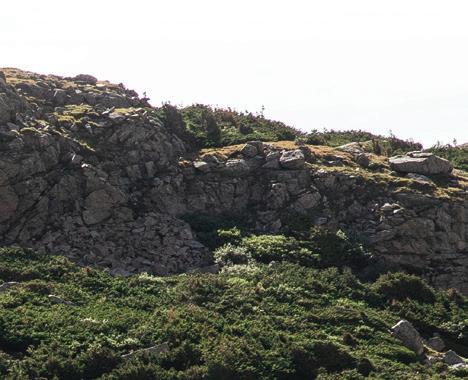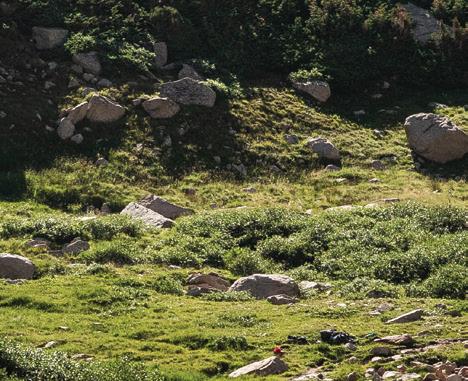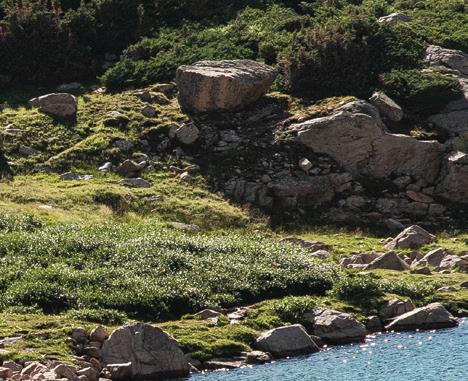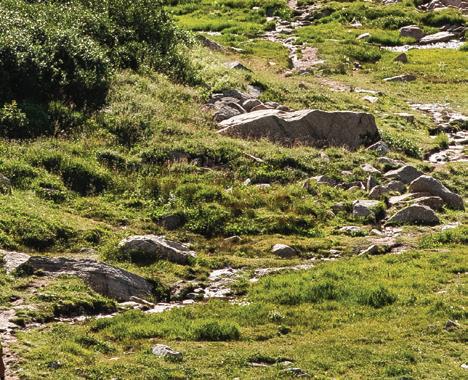La Sportiva trail issue
SPRING 2023


SPRING 2023

Competitive running is a brutally objective world. The whole purpose of the track in “track & field” is to have a precise arena by which to dispassionately analyze performance. The mathematics of athletic value are seductively simple: how long did it take you to run this exact distance? When it comes to contending a record or measuring improvement, the onus is on one thing only: linear, unfettered, metronomic speed.
The mountain environment, on the other hand, is almost the exact philosophical and conceptual opposite of the straight edges and clean curves of a stadium track. Wild, untamed, chaotic and often unpredictable, the mountains and mountain culture–-be it rock climbing or mountaineering— have long been the muse for romantic ideals and the theater for classic human drama. The primary attempt at standardization in technical climbing is to assign a route a grade, which is typically proposed by the first ascensionist, then confirmed through crowd-sourced consensus. How hard do people who have climbed a given route feel it is? There is endless discussion surrounding said grades and sometimes there is ego involved in assigning them. In short, they are unavoidably subjective.
Whereas running around a track has largely been reduced to a science,
climbing in the mountains is, even today, still an art where methods and inspiration and objectives are all chosen by the individual and are an expression of that person’s values. There are a lot of different ways to climb a mountain. How you do it says a lot about why you do it; such value-laden analysis is virtually irrelevant in the world of running around a track as fast as possible.
Of course, not all runners are scientists–-far from it—and not all mountaineers or climbers are artists. Not even close. But the tenor of each pursuit is unavoidably tinted by the ultimate goal of each activity—on the one hand, run as fast as possible; on the other, climb in the best style by the most beautiful and difficult route.

In my view, the meeting ground of these two end-members of the perambulatory spectrum is the arena of the Fastest Known Time, or FKT.
As far as anyone can tell, this term was coined by the effervescent Bill Wright–-an extroverted Boulder-area engineer, climber and runner (and skier and cyclist and tennis player and writer). He is also the founder and ringleader of a group of athletes who identify both as runners and climbers: the Satan’s Minions. When I first moved to Boulder almost 15
photo by: ©ted schieleyears ago I quickly became aware of this cadre of runner-climber hybrids who would not only climb the Flatirons—Boulder’s iconic backdrop of 500-1000’ rock faces all titled at roughly 50-55 degrees—but would do so without a rope, would link many formations together in a single effort, and would run the approach and egress in an attempt to see who could do it fastest and just how fast. This activity is the ultimate expression of a goal defined by terrain and imagination; distance is an afterthought. Start and finish at a trailhead, run and climb to those summits in the sky, and return as fast as you can.
In its early days, one of the fastest members of the Minions was the equally charismatic Buzz Burrell. Although Buzz’s athletic roots were most firmly planted in running, he was a similar jack-of-all-outdoortrades as Bill, but with an iconoclastic and philosophical yin to Bill’s engineering and timekeeping yang. Ultimately, Buzz and his bookish adventure partner Peter Bakwin (an atmospheric physicist) popularized Bill’s FKT concept by formalizing it in a basic website where such terrain-defined speed records could be tracked.
To me, the mechanics of the record-keeping are not nearly as
interesting or important as what the concept of an FKT represents: the wedding of the objective, timekeeping world of running with the more subjective, artistic—and, let’s be honest, adventurous—emphasis on terrain and tactical style found in the world of climbing and mountaineering. It is a unique balance. Climbing is, at its root, an irrational pursuit where choosing the most difficult route by the purest means is the ideal. These are notably squishy standards, even if the activity itself is highly athletic, and thus, prone to formalization. Evaluation of running performance has always been much more objective: a precise distance interrogated by the unwavering stopwatch.
FKTs tend to exist on routes where races aren’t allowed (or the organization of one would be far too onerous), but the line is so pure and obvious in the way it hews to a certain geographic or mountain aesthetic (summit link-ups, circumnavigations and range traverses all come to mind) that it simply begs to be cleaned in a single, concerted push. The satisfaction that comes from pushing oneself all-out to explore a personal limit is still there, but the hoopla and coloring-within-the-lines nature of a race isn’t, even if the preparation consists of as focused a training regimen as it would for a race.
In popularizing the concept of the FKT, Bill and Buzz and Peter were championing the notion that mountain athletes can have it both ways: left brain and right brain. Science and art. Clinical performance and creative interpretation.
My own integration into the world of FKT’s had typical origins—I was first and foremost a runner. I grew up in rural Nebraska. This means that at least 90% of the running I did during my teenage years was on unimproved surfaces—rolling gravel roads, rangeland double-tracks and singletrack cow paths. From the beginning I had a predilection for the toughest, most interesting routes I could devise. While the footing in Nebraska is soft, it is also largely consistent and predictable, allowing for full-tilt linear propulsion in essentially a single plane. As such, I saw myself as simply, broadly, a runner. Not a roadie, not a trail runner, certainly not a mountain runner. Just: a runner.
Even at an early age, it was fairly clear that I didn’t have the talent to truly excel in the uni-dimensional realm of track and road racing. My lack of traditional running success and inherent attraction to high-volume over intensity made it easy for me to eventually become curious
cover photo by: ©jason doraisabout the less exacting scene and more adventurous theater of ultra-distance races staged over rugged terrain. Nevertheless, during my first half-decade of racing mountain ultras I retained a misguided disregard for forms of movement that I felt were (if I’m being totally honest) beneath the Platonic ideal of a runner. Despite several years of being a runner in Colorado’s decidedly more extreme topography, I was still wed to my identity as a runner. To me, hiking and all-limbs-engaged scrambling did not belong in the same rubric as running. My basic philosophy was: if you were good enough, you could run it. If it was too steep or technical to be run, it wasn’t worth doing.
It took breaking my leg in 2011 to finally abandon such a narrow view in favor of a more expansive perspective of what running could be. In the recovery from that injury I embraced steep, uphill hiking as a legitimate means for getting a workout—the true epiphany occurred when I realized I was able to power-hike some of the classic hill-climbs around Boulder, CO nearly as fast as I had ever stubbornly run them. And I reconnected with rock climbing, a side-hobby that I’d sporadically pursued in college, especially whenever injury would force me to soften my monomaniacal focus on running.
This mindset shift in acceptable movement ultimately precipitated a key change in how I defined my relationship with foot travel. Instead of
evaluating all efforts through the clinical, immutable metrics of time and distance, I began to draw inspiration and motivation from the landscape itself. No longer did mileage matter to me. What mattered was the kind of ground I covered in that mileage, and where that mileage took me.

My daily running decisions were now driven by terrain and topography, not arbitrary distance. Reaching a summit, connecting a series of peaks or traversing a ridgeline all became worthy goals instead of simply covering a predetermined amount of miles. When the emphasis shifts from distance to topography, the form of movement becomes much less important, only that it’s self-powered. Suddenly, I no longer saw hiking, scrambling and climbing as liabilities to my weekly mileage goals. Rather, they were assets in my daily pursuit of achieving topographic high points by the most efficient and aesthetically-pleasing line.
As I sought steeper and more direct routes up the local peaks in Boulder, my eyes naturally turned to the most obvious and imposing manifestations of that ideal—the tall, sheer-seeming eastern faces of the Flatirons themselves. Buzz was my introduction to this steeper, more technical world. We had met five years previously when I had run—and won—my first Leadville 100 in a pair of La Sportiva Mountain Running shoes, the Slingshot. Buzz was the manager of Sportiva’s Mountain Running® Team at the time and,
photo by: ©matt trappeindeed, ever the visionary, had been its primary instigator. He offered me some free shoes and my entrée into the outdoor industry was set.
In 2012, the first season after my broken leg, the concept of FKTs offered a compelling framework within which to find inspiration and to focus my athletic efforts. The shift in perspective and skillset initiated by the previous season’s broken leg combined naturally with my competitive running background and mindset to open up a whole new-to-me world of mountain exploration and athletic expression. I increasingly felt limited and less inspired by the formalized world of trails and races, but still took great joy in pushing myself physically.
In the ensuing years I made attempts on FKT’s that ran the gamut of distance, terrain, and format. Largely off-trail routes to range highpoints, multi-peak link-ups that required continuing through the night, backyard efforts less than an hour in duration, endurance ridge traverses that never dropped below treeline, even some multi-sport objectives that combined endurance and athleticism with technical skill and know-how. In my view, all are fair game and the scope and style of further challenges are only limited by my energy and imagination.
The pandemic in 2020—when virtually all formal races were canceled—turbo-charged the dissemination of the FKT into the mountain running


community’s broader consciousness. With no races to contend, athletes around the world turned to testing themselves against routes of their choosing, on dates of their choosing. To me, the great gift and appeal of the FKT—and ideally its lasting impact—is this emphasis on individual agency and creativity.
The timekeeping aspect, while fundamental to the concept, is I think a bit of a red herring to the specific approach and mindset that FKTs enforce. It doesn’t really matter who is fastest, but, for me, I know a deeper connection is formed between myself and a place if I am operating closer to my zenith of physical effort. FKTs offer a reason to go to some of the most beautiful places in the world, seek a compelling route, develop a meaningful relationship with that place, and finally, through focused effort, have a rich experience that imparts a durable memory. There is value and reward in striving to be the best version—or, at least, a better version—of yourself. FKT’s provide an apt framework for this fruitful striving.
photos by: ©ted schiele
Designed for runners looking for plush cushion, a wider fit and higher volume, the Jackal II trail-running shoes keep your feet steady and stoked for long runs through rough and technical terrain.





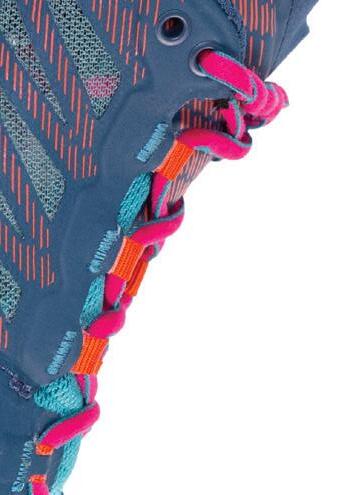






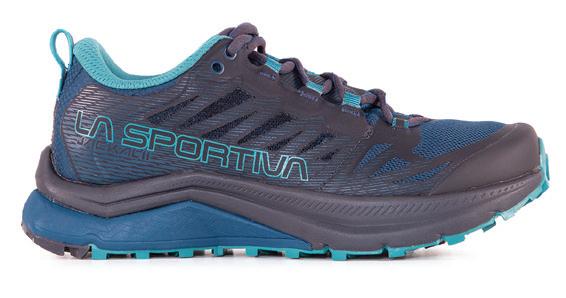

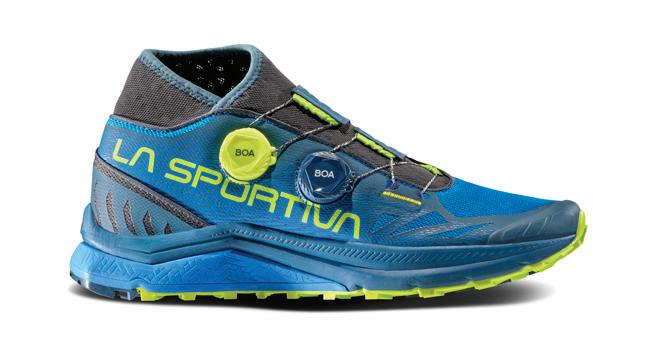


 m neon/goji | msrp $165
m black/clay | msrp $165
w carbon/lagoon | msrp $165
m storm blue/lime punch | msrp $185
w white/hibiscus | msrp $185
photo by: ©tomas gual
m electric blue/lime punch | msrp $165
photo by: ©matt trappe
m neon/goji | msrp $165
m black/clay | msrp $165
w carbon/lagoon | msrp $165
m storm blue/lime punch | msrp $185
w white/hibiscus | msrp $185
photo by: ©tomas gual
m electric blue/lime punch | msrp $165
photo by: ©matt trappe
A few months into winter, my skin just absolutely craves the sunshine. It’s not just mental, it’s physical. Our skin is like a solar panel, transforming the sun’s rays into Vitamin D, essential to health and also, I swear, for all around feel-good vibes. I get so excited when warmer, sunnier days of springtime start to outnumber the frigid ones… when the sleeves start to come off!
With warmer temps come dry roads and the beginnings of dry trails! I always feel like a mermaid who has grown legs when I first start to transition to more running than skiing. I’m also aware of the impact on my legs so much more than the soft and snowy world. It’s a transition for sure, but here are some favorite gear pieces to ease the shift.

Spring weather is fickle, and some days of shoulder season may still require leggings, where I prefer the Triumph Tight Pant. These offer warmth, but are still light enough to be a go-to option. I love the side mesh pockets along with the bigger zipper pocket in the back. The side pockets are perfect for a doggie trash bag, a gel, or even for stashing a thin glove on each side, great for when your hands warm up on the run or if you want to be prepared in case the temp drops. The zipper pocket in the back is ideal for a phone with even more room to spare.
The Triumph Pant is available in ¾ length and also shorts, so it’s the same upper fit with the versatility to show more skin as it warms up out there. These ease the transformation into spring beautifully, although I need sunglasses just to look at my own
legs when they finally come out of hiding from ski pants and leggings.
Living at high elevations, whether its winter or the height of summer, the waterproof Pocketshell JKT is always in my pack. But in spring, where it’s breezy and cool rather than cold, the Briza Windbreaker JKT does the trick while being so small to stash away.
My shirt-of-shirts for the changing seasons is the Tour Long Sleeve. In winter I use this shirt as a baselayer on warmer days, but it’s all you need for spring running. It’s super breathable and the lightest long sleeve shirt from La Sportiva. In spring when weather can still change rapidly, sometimes a long sleeve still makes sense. If it’s truly suns-out guns-out temps, the Sunfire T-shirt is the same cozy, breathable material but in a T-shirt option.
Beanies slim down to headbands in the spring, and the Artis Headband is a favorite, (I have multiple colors)!
In the mountains, springtime can feel like the time of seasonal confusion where you start in a long sleeve, strip down to a sports bra, then end up in a jacket - OR the complete opposite! You never know what it’s going to be out there so make sure you’re headed out with the right layers. Check out these lightweight layering options from La Sportiva!
 photos by: ©jesse levine
photos by: ©jesse levine
Running along
No worries in sight
Just a perfect trail
What a delight!
But how to give back?
How to take care of this trail I love so?
It’s simple, they say



Who’s they?
The trail builders, don’t ya know
The hearty people who take metal to dirt, Who move rocks and trees, Who build trails for you and me!
Don’t cut switchbacks, they say It erodes the land, hillsides sway.

Just stay in-line, Our backs and your taxes will thank you. And run through mud!
Don’t be shy
If you avoid the mud, you braid the trails and our souls will die. Thank you, they say, For following these two simple asks. Now off to the trails
Rejoice and go fast!
| msrp $165

With an aggressive outsole, burly lugs and an adaptable fit, the Mutant is built to cover some serious terrain.


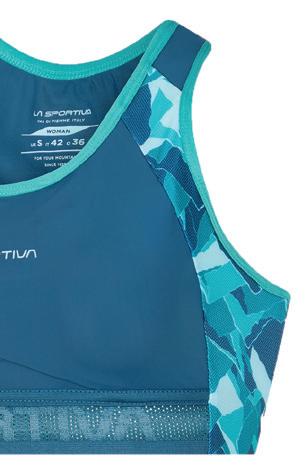


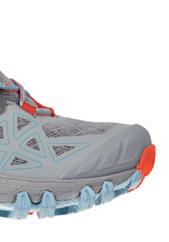

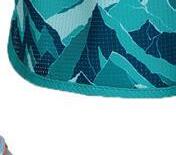



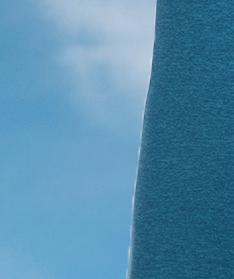


 hover top tracer t-shirt timing short
photo by: ©matt trappe
tracer t-shirt | XS - XL | storm blue/lagoon | 2.9 oz | $49 | timing short | XS - XL | storm blue/lagoon |3.4 oz | $79 | hover top | XS - XL | storm blue/lagoon |2.6 oz | $65| bushido II womens | 36-43 | moon/paprika |8.8 oz | $155
bushido ii
hover top tracer t-shirt timing short
photo by: ©matt trappe
tracer t-shirt | XS - XL | storm blue/lagoon | 2.9 oz | $49 | timing short | XS - XL | storm blue/lagoon |3.4 oz | $79 | hover top | XS - XL | storm blue/lagoon |2.6 oz | $65| bushido II womens | 36-43 | moon/paprika |8.8 oz | $155
bushido ii









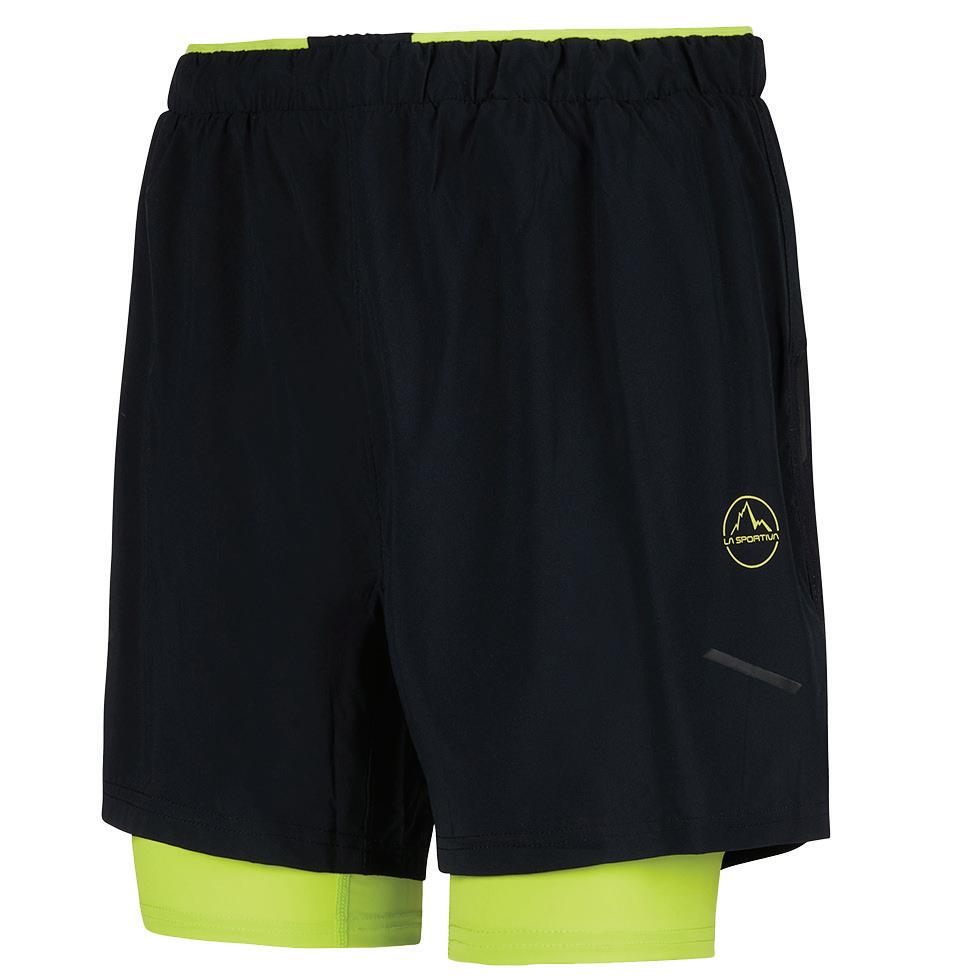
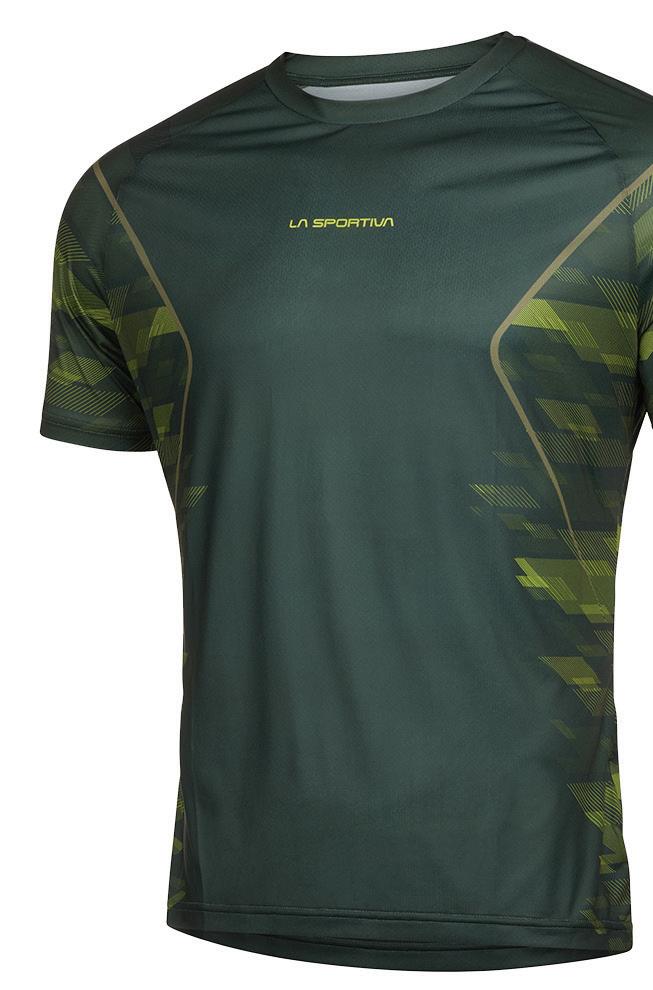







































w lagoon/cherry tomato
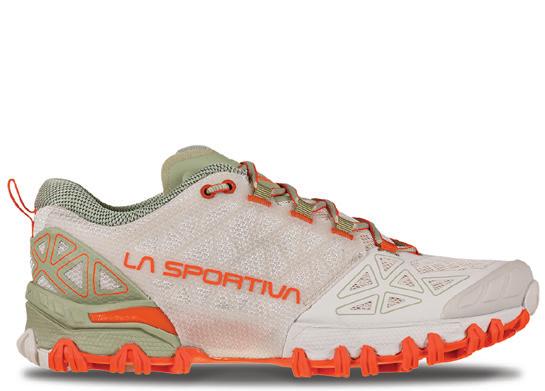
w black/carbon












w moon/paprika

w tea/cherry tomato
 m olive/neon
m clay/tiger
m black/clay
| msrp $155
m black/hawaiian sun
m olive/neon
m clay/tiger
m black/clay
| msrp $155
m black/hawaiian sun
For those looking for the perfect combination of responsiveness, stability and performance with amazing protection and superb traction.
 photo by ©matt trappe
photo by ©matt trappe



Why do we do it? Why do we willingly pay hundreds of dollars for an undoubtedly painful experience? While each athlete’s “why” is unique, there are certainly some similarities. At its core, trail running grounds us to the outdoors and one another. The backdrop is captivating and there’s never enough single-track to satisfy the spirit. The sound of scree dancing below your feet, the smell of pine baking in the summer sun, these are undeniable experiences for anyone who runs ultras.
Trail running requires an adventurous spirit, tenacious willpower and curiosity of self. Why then, were there only 15 women, out of 146 racers, at the starting line of my last 100-mile race? Why do we see discordant numbers with respect to gender, underrepresented minorities, and the LGBTQ+ population within the ranks of entrants?
I won’t be able to answer or solve these questions for our community here. But what I can do is provide my perspective: sponsored athletes, trail running companies, race directors and coaches can create momentum for visible change. I’ve used my platform, as a La Sportiva Ambassador, to bring awareness and recognition to LGBTQ+ individuals on the trails and deeply believe representation matters. I encourage ambassadors within our sport to bring awareness to underrepresented groups. Running in the mountains invites an array of experiences for which everyone should have the chance to indulge. By representing and promoting athletes of all kinds, who choose to spend their time and energy participating in our sport, we stand to increase diversity, inclusion, participation, and competition.
 photo by ©matt trappe
photo by ©matt trappe
| msrp $165
Lightweight performance allows you to maximize speed; whether you are training, racing or logging long days in the mountains.





w hibiscus/malibu blue

m yellow/black














| msrp $185






For precision, stability and performance, look no further than the Cyklon. Featuring the BOA® Fit System, this shoe is designed for technical terrain and short to medium distances.






m black/yellow
w storm blue/cherry tomato


 photo by © ted schiele
photo by © ted schiele
photo by © ted schiele
photo by © ted schiele
If there is one answer to just about any question about running it is this: Join a running club.
Want to last long in this sport? Join a club. Want to meet fellow runners? Join a club. Want to run more consistently, have more discipline, run further, run faster, run better? Join a club. The answers to all of your running needs can be found through this vital part of the running community. As much as it will help your running, it will also improve your life in more ways than you can imagine.
It celebrates both amateurism and professionalism because it simply focuses on serving people. It exists to provide its members with meaningful connections through a mutual enjoyment of running. It exists through the selfless participation and volunteerism of its members. It is the epitome of community.

It represents something greater than you. The pride that comes with wearing your club colors gives you the courage to start and stokes the fire to finish when your motivation or belief wanes. It propels you forward with emotion and purpose. It is the epitome of a team.
It embodies a diversity of goals and breadth of accomplishments. A club celebrates often. It celebrates first times, personal records, consistency, and participation.
It celebrates everyone. Running is a fickle sport where personal successes can be few and far between. A club offers you opportunities to join in on the joy of others and to be a part of their achievements.
A club is there for the long haul. It is a constant, offering dependability and consistency. It’s a bank of wisdom and experience built by and for the community. You will both borrow and deposit by the simple act of showing up and participating.

Above all, the running club gifts you the opportunity to nurture established friendships while discovering new ones. It’s a powerful combination that defies complacency and welcomes possibility. The diversity of age, gender, professions and backgrounds creates a genuine and meaningful social network with lasting connections that can quite literally change your life.
These connections have been most acutely tested, strengthened and cherished during the pandemic, when isolation and self-preservation took hold. So too, unfortunately, did loneliness; an all too common and increasingly relevant problem in modern times. When the whole world shut down, the club kept the lights on. It became the antidote.
Running is great.
Running with friends is better. Running with a club is everything.
Members of the Rocky Mountain Runners photos courtesy of rocky mountain runners


The Akasha II is the preferred shoe for trail runners seeking technical terrain or high mileage outings.



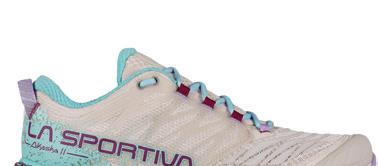


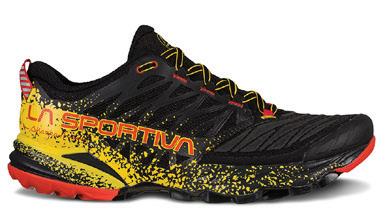
 m carbon/flame
m black/yellow
| msrp $175
w shadow/moss
w shadow/red plum
photo by © matt trappe
m carbon/flame
m black/yellow
| msrp $175
w shadow/moss
w shadow/red plum
photo by © matt trappe


|







The Nucleo High II GTX offers best-in class breathability in a mid-duty waterproof hiker/backpacking boot.















m taupe/clay | Available in wide






$239 m carbon/chili | Available in wide

aloe/velvet | Available in wide w oak/topaz | Available in wide


| msrp $189


With a wide comfort fit, the TX Hike Mid GTX combines the support of a hiking boot with the agility of a trail running shoe making it perfect for off-road terrain or a long day of city sightseeing. Recycled uppers, rubber outsoles, laces, webbing and recycled Gore-Tex® Bluesign® certified liner all combine to make a boot that is made from 65% recycled materials!







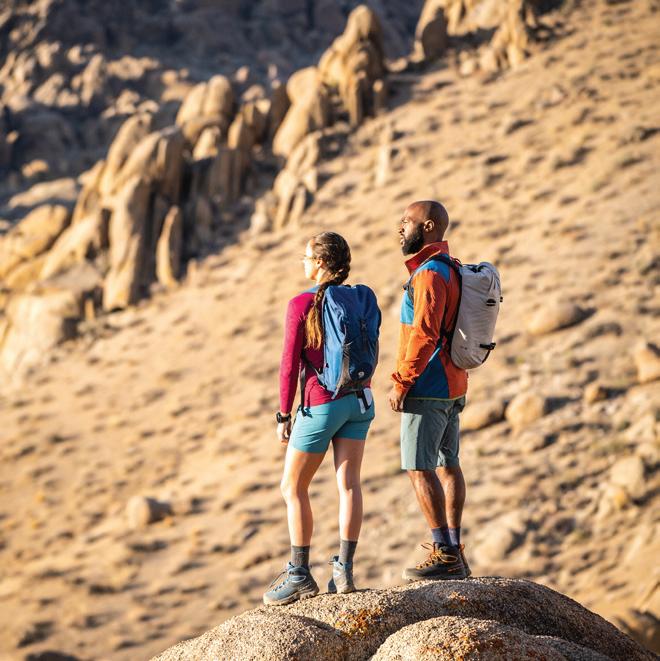


The Elks Traverse Fastest Known Time (FKT) route starts at Capitol Creek Trailhead, enchains the seven 14,000’ summits in the Elk Range above Aspen, Colorado and finishes at the Castle Creek Trailhead– all told a roughly 55 mile and 24,000’ traverse. Freedom of choice is at the heart of the challenge; it is the athlete’s choice to trace their own line connecting the summits.
You begin on the western edge of the range on the Capitol Snowmass Massif with its silver granite ridges snaking from summit to summit. The heart of the Elks consist of maroon colored shale mountains straight out of a children’s picture book. Finally, the easternmost edge of the Elks, home to 14ers Castle and Conundrum.
I’ve wanted to run the traverse for some years now. I was born and raised in the Roaring Fork Valley, having idolized the Elks and the travelers within them. Rickey Gates, a runner I’ve looked up to for some time now, set a record on the Elks Traverse in 2015 at a time of 27.5 hours. I was a junior in High School and just getting more serious about trail running at the time. Rickey’s effort was an inspiration and stuck in my mind. Neal Beidleman, a local mountaineer with global recognition, had pioneered the traverse with his partner Jeff Hollenbaugh in 1996. Neal was involved in the tragedy on Everest detailed in Into Thin Air.
I’ve become rather close to Neal over the past couple years, fostered by a mutual love of simple movement in high places. We give each other kudos for some things we’ve done and shit for what we could’ve done better or never did at all. The roughly 40year age gap has never dawned on me as our shared experiences are closer than most. We’ve ventured along the same ridges, seen alpine sunrises and sunsets, and shared profoundly close experiences.
I spoke with Neal following my completion of the Elks Traverse and asked him what his reasoning was for doing the traverse in such close proximity to the Everest incident. “To restore my love for movement among the mountains. That’s why I went to Everest to begin with,” said Neal. There was no exercising of demons, just a reinvigoration of love for the simplicity of alpine movement.
My reasons for doing the Elks Traverse some 26 years later were parallel. To connect with my childhood mountain range and to spend a day within them grounded in continuous movement.
August 9th, 3:00am: I rolled over to the sound of my alarm and peaked outside my tent as the stars and moon lit up the Capitol Creek drainage. I did a bit of early morning stretching in the dirt. Then, I sat there, looked up at the moon and I took a moment to ground myself in gratitude. My heart and mind were filled with an excitement to spend an uninterrupted day among these mountains: from sunrise to sunset, with a bit tacked onto either end.
August 9th 4:06am: The run started in the predawn hours by moving up the Capitol Creek drainage. I felt good moving guided by moonlight. The brisk cold inspired quick movement as a fear for heating up and losing water felt minimized. I greeted the first light of sun as I crested the Capitol-Daly shoulder and continued running across the talus field beneath Capitol with zest to reach the first summit.
August 9th 6:22am: I arrived on top of Capitol (14,181’). No stopping here, using the inspiration of a golden sunrise on silver granite ridges to trace back over the knife edge and onward to the Wandering Dutchman couloir to descend into Pierre Lakes which sit in a granite moonscape at 12,000’ below the terrifying yet inspiring Satan’s ridge.
Running along talus is a rather challenging endeavor as you skip from one large boulder to the next envisioning 20 moves before and executing in a continuous flow of foresight in mind and present execution of body. I crossed Satan’s ridge to drop towards the western flanks of Snowmass in the Siberia lakes basin. From there, a quick ascent up the S-Ridge of Snowmass. Snowmass is definitely one of the unassuming summits along the traverse, but the S-Ridge changes that in my opinion: a roughly 1,500’ ridge of perfect 3rd class scrambling with the most solid rock in the entirety of the Elks.
August 9th 10:01am: 14.78 miles, 7,307’ of elevation gain, and two 14,000’. The summit of Snowmass has come and gone as I continue quickly down to Snowmass Lake where my girlfriend Carly had dropped a goodie bag for me. Having downed a good dose of carbs, and proteins to keep the pep in my step alive. I loaded a good handful of gels into my vest and continued running on the Geneva Lake Trail towards the world famous Maroon Bells.
I veered off the trail just after Snowmass Creek towards the Lost Remuda Basin to take the West Ridge of South Maroon to the summit. A route which I figured would be more direct than going over Buckskin Pass as Rickey had done. Unknown to me, Neal followed this same route on his traverse. The Lost Remuda Basin seldom sees foot traffic and you must navigate the faint trails the local elk population have carved to efficiently move through the willow-covered terrain.
Three miles of schwacking elk trails later, I found myself at the base of the 1000’ West Ridge of Maroon Peak and its primarily 4th class climbing, interspersed with bouts of high consequence 5th class terrain.
August 9th 12:45pm: Contending with the high exposure and southern aspect, I was hot and behind on water as I reached the summit of Maroon Peak. From here, the notorious Bells traverse lies between you and North Maroon. The dehydration and miles before me had definitely taken the explosivity out of my body for the technical movement.
August 9th 1:25pm: North Maroon, 21.39 miles in, 11,310’ elevation gain, and four summits under my belt. Onward to Pyramid. My hydration was far behind, so I downed a few soft flasks of water at a creek crossing before descending again. I decided to save weight and ascend the 4,000’ up and down Pyramid sans vest, sans water, sans carbs. I needed to focus and at that point thinking about food and water was something I didn’t have the bandwidth for. This definitely could’ve ended my traverse but I reminded myself that many great mountain athletes go extended lengths of time without food or water, so ideally I could do the same. Foolish? Yes. Did it work? Yes.
The ascent of Pyramid was rather psychedelic after such a long,
hard effort, but I knew Carly and friend Jeff Colt would be waiting for me at the Maroon Lake parking lot and my solo portion for the effort would be coming to a close. I indulged in the runnable section from the Crater Lake Junction down to Maroon Lake.
August 9th 6:20pm: Carly and Jeff greeted me with hugs and food at Maroon Lake. I was five summits in as I laid down in the creek to cool off, changed my clothes while downing as many calories as I could stomach.
Jeff had graciously agreed to run the last section with me into the night to the finish. The time goal was in mind, but adventure was the priority. We began our trek towards East Maroon Creek – the longest section of sustained trail in the traverse. After my gluttony at Maroon Lake my stomach started to turn sour and doubts crept in, despite that Jeff kept telling me to keep on eating and drinking. So, I did. We saw a bear, gave it a nice little hello and it ran away.
August 9th 8:10pm: The sun had set and thankfully my stomach ache faded as well. Jeff’s constant reminders to eat and drink had spurred my body into a second wind. We boosted up to Triangle Pass under the moon, and sprinted down the eastern side of the pass down towards the Conundrum hot springs. As we made it near the springs, we heard voices of the logical humans indulging in a night of drinking, banter and soaking. We looked at each other, debated taking a dip. We instead opted for some midnight bushwhacking followed by 3,000’ of choss scrambling to the Conundrum – Castle col.
Jeff and I shared one Bluetooth earbud each to create a technological leash between our two bodies. When the music started cracking up, one of us had to hurry up or the other slow down – it was mostly my tired ass needing to hurry up.
August 10th 12:42am: We reached the col between the two peaks and it was go time. We looked at one another and said, “Alright let’s go to the top of these two mother f*ckers and get down to Castle Creek”. This was accompanied by some sprinting across the Castle-Conundrum ridge in the middle of the night, intensified by strong west winds, and full gas descending down Castle.
The final stretch along Montezuma Basin Mine Road Jeff turned into a football coach telling my sorry ass to sprint faster. I whined, but I did, and we somehow maintained a 7:40 pace for the last miles.
August 10th 2:37am: 22 hours 30 minutes and 50 seconds later and I’m done. With a donut in one hand, a croissant in the other, my pruned feet glowing under the full moon. I sat with a big grin.

































mid leather gtx carbon/atlantic







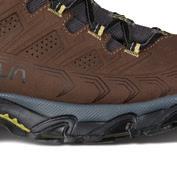


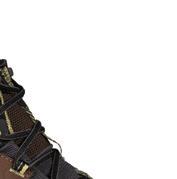











|













II mid gtx carbon/topaz







| Available in wide
mid gtx carbon/iceberg













| Available in wide
mid leather gtx moon/paprika

leather gtx chocolate/cedar
mid leather gtx ivy/tango red



| Available in wide












 ultra raptor
w
mspr $209
ultra raptor II
w | mspr $209
ultra raptor II
w | mspr $219
ultra raptor II
w | mspr $219
ultra raptor II mid
m | mspr $219
ultra raptor II
m | mspr $219
photo by © aly nicklas
ultra raptor
w
mspr $209
ultra raptor II
w | mspr $209
ultra raptor II
w | mspr $219
ultra raptor II
w | mspr $219
ultra raptor II mid
m | mspr $219
ultra raptor II
m | mspr $219
photo by © aly nicklas

































|
| Available in wide




























|


















$195 | Available in wide




 ultra raptor II gtx black/clay m
mspr $195
ultra raptor II gtx red plum/carbon w
mspr
ultra raptor II leather gtx ivy/cedar m | mspr $179
ultra raptor II leather gtx clay/mist w | mspr $179
ultra raptor II gtx black/clay m
mspr $195
ultra raptor II gtx red plum/carbon w
mspr
ultra raptor II leather gtx ivy/cedar m | mspr $179
ultra raptor II leather gtx clay/mist w | mspr $179


